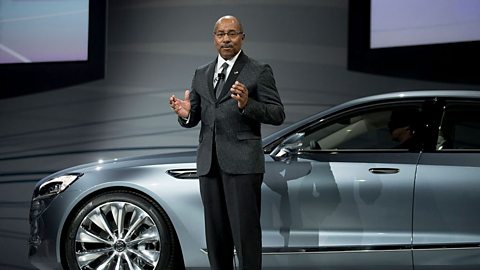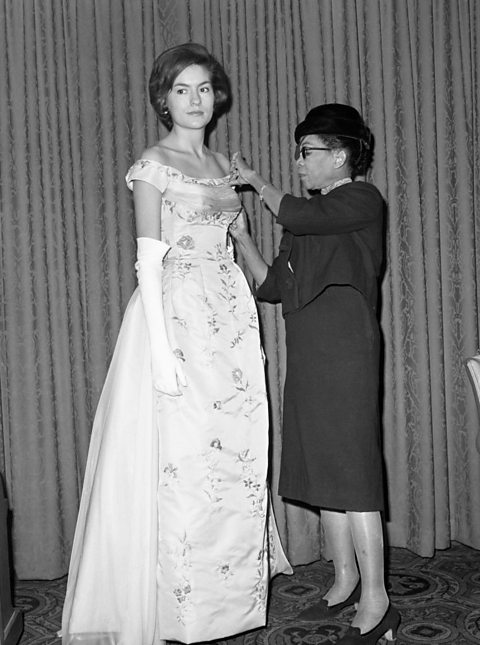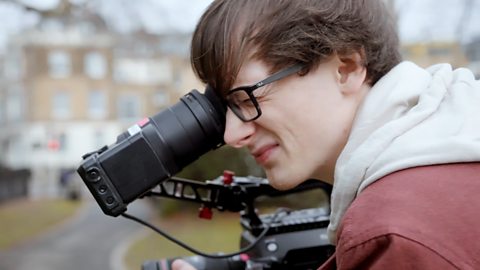The creative industry can be a rewarding, innovative - and even glitzy - one to work in.
It incorporates worlds such as fashion, make-up and design, and enables people to take their ideas into all sorts of amazing places.
In this article, Bitesize is celebrating three black pioneers of the creative industries. They broke down barriers, saw their work make a massive impact, and hopefully can continue to inspire young people to make the most of their creative potential.
Pat McGrath: Make-up artist
Vogue editor-in-chief Anna Wintour, one of the most prominent names in global fashion, described Pat McGrath as the āmost influential make-up artist in the worldā. Her contribution to the industry was further emphasised when the Queen made Pat a dame in the 2021 New Year Honours.

The Northampton-born artist was heavily influenced by her mum, Jean, who was also passionate about fashion and beauty. She would mix pigments for make-up as it was so difficult to find products for darker skin in the 1970s and ā80s. Pat recalled on “óĻó“«Ć½ās Desert Island Discs how her mum would improvise with products from around the house, including using cocoa powder on her face.
Pat is entirely self-taught and became renowned for her avant-garde looks and ability to make skin look radiant. Her career stretches back more than 30 years, working at first for street-look magazines and also with the successful music collective Soul II Soul. She has collaborated with big fashion names such as Alexander McQueen and Dolce & Gabbana and works on up to 80 major fashion shows each year.
Pat once said: āBeauty has nothing to do with gender, race or age and it has everything to do with confidence, individuality and character.ā
Ed Welburn, car designer
When Ed Welburn retired in 2016, the Smithsonian Museum of African American History and Culture collected every design sketch he had made during his time at one of the USAās biggest motor companies.
It was the first time an automotive designer had been singled out in this way, reflecting a career which had an impact beyond its own industry.

When he arrived at General Motors in 1972, Ed was its first African American designer.
His career journey began even earlier. When he was eight years old, Ed saw a brand new Cadillac car at an exhibition in his home city of Philadelphia and decided he wanted to be a car designer. When he was 11, he wrote to the design department of General Motors, asking for advice on entering the industry. That led to him studying sculpture and fine arts at university and a route into the organisation he longed to work for.
Ed remembered his first days in the job during an interview on a US radio station, saying: āI learned very quickly that I wasnāt just representing myself, I was representing a lot more people.ā
His sculpting skills led to a reputation for cars considered beautiful, as well as practical. By 2003, he had become the companyās vice president of global design.
Ed was also involved in a programme which helped people from diverse backgrounds into design schools, which could potentially lead to the same career opportunities he enjoyed.
He said in a 2016 speech: āWhen a designer creates a sketch, he or she signs their work, and that sketch is placed on display in front of everyone, and when you are the very first African American hired to design cars for General Motors, everyone wants to see what you can do. Talk about pressure. I mean incredible pressure.ā

Ann Lowe, fashion and couture
Born in Alabama in 1898, Ann Lowe was described as the ābest-kept secretā of American high society in the 1950s.
She was best known for designing the dress - incorporating yards of silk taffeta - worn by future first lady Jacqueline Bouvier when she married John F Kennedy in 1953.
But it wasnāt easy for Ann to build her career. After showing promise in her Alabama home, she moved to New York in 1917 to study fashion.
On enrolment, Ann had to be segregated from her fellow students because she was black. However, her work was so exceptional, it was later used as an example to other students.
When a dress she designed was worn by Olivia de Havilland when she collected the best actress Oscar at the 1947 Academy Awards, it did not bear Annās name on the label, but the department store it had been designed for.
Ann rectified that by becoming the first black woman to open a dress store (or 'salon') on New Yorkās Madison Avenue. She would only make clothes for people in high society - mainly those whose names appeared in the Social Register, a list of people considered to be of good wealth and status. The debutantes she designed for would often return when they needed a wedding dress.
By the time of her death in 1981, Ann was no longer a society secret. Examples of her work are preserved in the Smithsonian Museum of African American History and Culture, New Yorkās Metropolitan Museum of Art and the Museum of the City of New York.
This article was published in October 2021


Black History Month: What do teenagers think?
We asked what they do to celebrate Black History Month at school, and how they feel about it.

Marie Van Brittan Brown: The woman who made our homes feel safer
A bespoke poem for Bitesize, by Sophia Thakur, as part of Black History Month.

Careers in the media and creative sector
Meet young people working in the media and creative sector.
